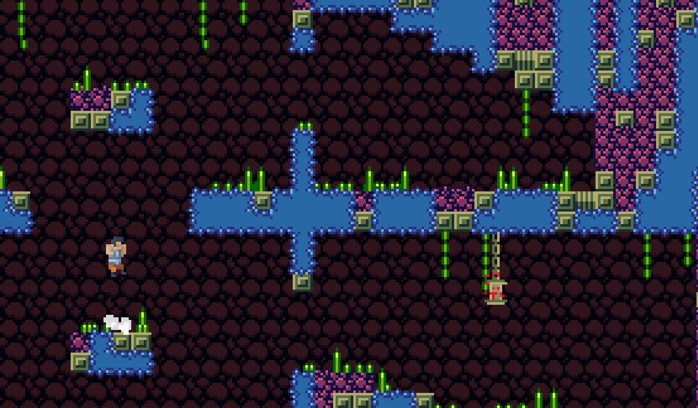Tag Procedural Content Generation
Procedural Contents Generation in Modern Videogames

8th September 2016 Update: I uploaded these slides on SlideShare. You can see them here. Hi guys! In the last month I’ve prepared a presentation on Procedural Contents Generation history and techniques in commercial videogames. I did this presentation for a Game Jam some time ago and for a series of meetings in our university. I think it is a nice summary of the main elements of PCG in commercial games, so I think it is worth to share this presentation with you!
Random Maps with Cellular Automata
In the spirit of the ProcJam2014 (that unfortunately I have to skip because of a ton of academic duties :<) I’m presenting to you a simple algorithm to generate maps: the cellular automata generator. In particular, cellular automata are very well suited for cave-like environment and, in general, natural maps. It works both in 2D than in 3D and can be easily implemented in no more than 20 minutes.
From the theoretical point of view, a cellular automata is a discrete model that consist in a regular grid of cells. Each cell can have a finite number of states (usually two: on and off). On top of this grid, a system of rules is built to control the evolution of the cells. The rule are usually simple and local: this means that each rule decide on the state of a single cell just on the basis of a limited set of cells (the neighborhood) located around the cell of interest. No rule on the global state of the grid can exist! For instance “the total number of cell in the on state is less than X” is NOT a local rule.
Random Goblin Name Generator
Hi everyone. In these days, me and my friend and colleague at Noctua (EDIT: we don’t have a webpage anymore) are working at a new game jam: the SpeccyJam. The goal of this jam is to recreate a game with the same feel and look of an original ZX Spectrum game. We chose to implement a “managerial game” in which the player takes the role of a fantasy blacksmith that have to increase its fame crafting amazing weapons. This jam is very formative because it is forcing us to work in a low resolution with a very limited color space and, also, to explore the amazing kingdom of 2D shaders in Unity in order to recreate the visual glitches of the original console.
